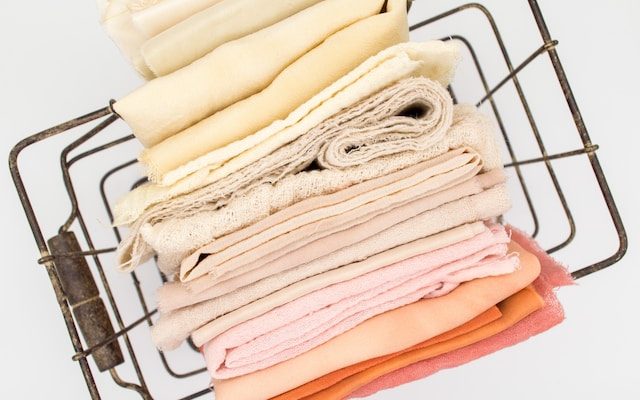Our towels and linens, those seemingly innocent items that provide comfort and convenience, can unwittingly transform into breeding grounds for various microorganisms. Bacteria, yeast, and fungi, invisible to the naked eye, find a welcoming habitat within the fibers of these textiles. But how exactly does this occur?
Our bodies shed dead skin cells daily, release oils, and secrete sweat. When we use towels to dry off after a shower or wrap ourselves in cozy bed linens, we unknowingly transfer these bodily substances onto the fabric. This creates an environment rich in nutrients—think of it as a microbial buffet—that sustains the growth of various microorganisms.
This accumulation of microorganisms can spell trouble for individuals already dealing with acne-prone skin. The microbial presence on towels and linens can further irritate and inflame existing acne lesions. Bacteria can spread across the skin’s surface upon contact, leading to the development of new pimples.
Residues of Skin Oils, Hair Products, and Skincare Products
Beyond the realm of microorganisms, the towels and linens we use daily also serve as unwitting carriers of another culprit that can wreak havoc on our skin: oils and residues. These substances, originating from our skin, hair products, and skincare routines, can profoundly affect our complexion.
When we dry our faces with a towel, we are not just removing water. We’re also inadvertently transferring oils and residues present on our skin. Similarly, the oils and products we apply to our hair and face can end up on our pillowcases, sheets, and other linens. Over time, this accumulation can harm our skin’s health.
The residues that find their way onto towels and linens tend to clog pores. Our skin naturally produces sebum, an oily substance that helps protect and moisturize it. However, when sebum mixes with external oils and residues, it can become a sticky concoction that traps dead skin cells, debris, and bacteria within our pores. This process can lead to the formation of comedones—commonly known as blackheads and whiteheads—initiating the acne development process.
Now that you know, using the same towel repeatedly or not changing your pillowcase regularly is quite unhygienic.
Maintain Clean Towels and Linens
Now that we’ve explored the various ways towels and linens can impact your skin, it’s time to dive into practical steps you can take to ensure they remain allies in your quest for clear skin.
- Wash your towels and linens frequently. Regular washing prevents the buildup of oils, residues, and microorganisms. Aim to wash your towels and bed linens at least once a week, and consider increasing the frequency if you are particularly acne-prone.
- Use mild, fragrance-free, and hypoallergenic detergents. These are less likely to contain irritants that could trigger skin reactions or exacerbate acne.
- Avoid mixing your towels and linens with other clothing items during washing. This reduces the risk of cross-contamination and ensures that your towels and linens are thoroughly cleaned. Separating them doubles your costs at the wash & fold near you, but washing them separately is better than suffering from acne breakouts.
- Do not share personal items. Sharing towels and linens with family members or roommates is tempting, but doing so can transfer bacteria and microorganisms. Encourage everyone to have their towels and linens to maintain personal hygiene.
Allergens and Irritants from Laundry Detergents
While the accumulation of microbes and residues on towels and linens can undoubtedly play a role in acne development, another layer of complexity is considering allergens and irritants from laundry products. These seemingly harmless agents can provoke skin reactions that mimic acne, making it crucial to choose laundry products carefully.
Modern laundry products, including detergents, fabric softeners, and dryer sheets, often contain fragrances, dyes, and chemicals. While these components make your clothes and linens smell fresh and feel soft, they can also be potential triggers for skin irritation.
Individuals with sensitive skin or allergies may experience adverse reactions to these substances. Skin irritation, redness, itching, and even small, raised bumps can develop—resembling acne lesions. The challenge lies in differentiating between genuine acne breakouts and reactions caused by allergens or irritants.
Distinguishing between genuine acne and skin reactions caused by laundry products can be tricky. The symptoms often overlap, leading to confusion and potentially misguided treatment approaches. It is essential to pay attention to the timing of the eruptions—do they consistently occur after using a specific detergent or fabric softener? If so, it might indicate that the skin reacts to these products.
Opting for skin-friendly laundry products becomes essential in maintaining clear skin. Unscented detergents, hypoallergenic fabric softeners, and dryer sheets can minimize the risk of skin irritation. These products are designed to reduce the likelihood of allergic reactions and are less likely to contribute to acne-like eruptions.
So, if you bring your towels and linen to same-day laundry service, inform them about your hypoallergenic concerns.
Protect Your Skin With Clean Towels and Linens
Take control of your skincare journey and incorporate these strategies. Always use a clean face towel, change your pillowcase and linens at least once a week, and use gentle skincare products.
While addressing towels and linens is essential in the battle against acne, remember that they’re just a part of the broader picture. Maintaining a holistic approach to skincare involves a balanced diet, staying hydrated, following an effective skincare routine, and managing stress levels.

